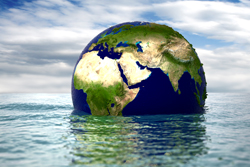Ocean depths hold the answers
Eurosites is part of an integrated network comprising nine deep-ocean observatories positioned off the continental shelf in waters deeper than 1\;000 metres. The observatories host scientific equipment that measures a range of different factors throughout the water column, from the seafloor to the surface. The network is coordinated by the National Oceanography Centre based in Southampton, UK and includes 13 partners from across Europe and the Cape Verde Islands. The project has two main objectives. The first is to improve the existing deep-ocean observatories and form an effective network that can describe time-dependant properties of the ocean system. The second is to carry out a number of specific scientific activities that will help develop new and improved approaches to monitoring the deepwater environment. Improvements to observatories have included the use of sensors to measure oxygen (O2), carbon dioxide (CO2), chlorophyll and nitrates in real time. Sensors and samplers have been employed to improve ability to measure properties in the ocean associated with the climate. This has included the deployment in both coastal and open sea of equipment for studying the biological carbon pump, mainly algae, which will provide ground-breaking insights into the ocean's role in the carbon cycle. Zooplankton abundance and diversity is a key factor to understanding the carbon cycle within the ocean and marine scientists are now testing a long-term sampling device. Acidification of the world's oceans as a result of climate change is of growing concern. Therefore, Eurosites researchers are monitoring pH levels to determine the impact of acidification and have developed, and are now using, a new type of pH sensor. Two autonomous seafloor platforms have been established in the Mediterranean. One monitors fluid flow and pore pressure to determine slope stability, while the other acts as a tsunami early-warning system. Additional activities carried out in both the Atlantic and Mediterranean include monitoring communities of bottom-dwelling organisms and associated biogeochemistry as indicators of climate change. Each of the nine deep-water observatories now possesses enhanced systems that allow them to conduct a wider range of activities even more effectively. The data from the sites will give EU scientists a clearer picture of changes taking place in our seas as a result of global warming and ocean acidification.

